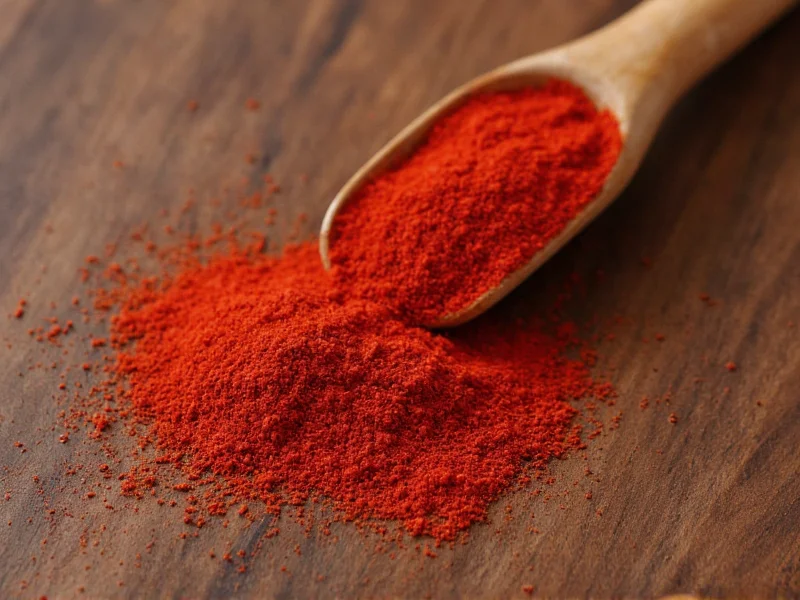Mace, the vibrant red aril surrounding nutmeg seeds, delivers a sophisticated flavor profile that distinguishes it from its more common cousin. While both come from the Myristica fragrans tree, mace's unique chemical composition creates a more nuanced sensory experience that professional chefs and home cooks value for specific culinary applications.
Understanding Mace's Distinctive Flavor Characteristics
When evaluating mace flavor, several key elements define its sensory profile:
- Aromatic complexity - Mace offers layered notes of citrus blossom, subtle pepper, and warm baking spices
- Intensity level - Generally milder than nutmeg, allowing for more generous use without overpowering dishes
- Aftertaste - Leaves a clean, slightly sweet finish compared to nutmeg's more lingering warmth
- Temperature sensitivity - Releases different flavor compounds when used in cold preparations versus heated dishes
Food scientists have identified that mace contains higher concentrations of myristicin and elemicin than nutmeg, contributing to its brighter, more floral character. This chemical difference explains why "mace vs nutmeg flavor" comparisons consistently show mace as the more versatile option for delicate recipes.
Mace Flavor Applications in Culinary Practice
Professional chefs leverage mace flavor in specific contexts where its unique profile enhances rather than dominates:
| Culinary Category | Recommended Mace Usage | Flavor Contribution |
|---|---|---|
| Light-colored sauces | Pinch of ground mace | Provides warmth without discoloration |
| Poultry dishes | Whole blades in poaching liquid | Subtle aromatic enhancement |
| Baking applications | 1/4 tsp ground mace per recipe | Complex sweetness without heaviness |
| Preserves and jams | 1-2 whole blades during cooking | Floral notes that complement fruit |
Unlike nutmeg, which can sometimes create a heavy, earthy note, mace's "floral undertones in mace spice" make it particularly valuable in recipes where clarity of flavor is essential. This explains why traditional béchamel sauce recipes often specify mace rather than nutmeg.
Maximizing Mace Flavor in Your Cooking
To fully appreciate mace flavor characteristics, consider these professional techniques:
- Use whole blades when possible - Grinding mace just before use preserves volatile aromatic compounds that degrade quickly
- Pair with complementary spices - Mace works exceptionally well with allspice, cardamom, and ginger for "complex spice blends with mace"
- Consider timing of addition - Add ground mace late in cooking processes to preserve delicate top notes
- Balance with acidity - A touch of citrus or vinegar can brighten mace's "mace flavor in baking applications"
When substituting mace for nutmeg, use a 1:1 ratio but recognize that the dish will have a lighter, more floral character. For those wondering "how to use mace spice in cooking" without overwhelming other flavors, start with half the recommended amount and adjust to taste.
Preserving Mace's Delicate Flavor Profile
Mace's volatile aromatic compounds require proper storage to maintain its distinctive flavor:
- Store whole blades in airtight containers away from light and heat
- Ground mace retains optimal flavor for only 6-8 months (versus 12-18 months for whole blades)
- Freezing extends shelf life but may cause condensation issues if not properly sealed
- Test freshness by rubbing a blade between fingers - strong aroma indicates good "mace flavor longevity"
Unlike many spices that grow stronger with age, mace's delicate flavor profile diminishes over time. This explains why "how long does mace flavor last" is a common concern among serious cooks. For best results, purchase small quantities from reputable spice merchants who can verify freshness.
Common Questions About Mace Flavor
What does mace flavor taste like compared to nutmeg?
Mace offers a more delicate, floral flavor profile with citrus notes compared to nutmeg's stronger, earthier warmth. While nutmeg has a pronounced woody character, mace provides subtle pepper and cinnamon undertones that work better in lighter dishes where you want spice complexity without heaviness.
Can I substitute nutmeg for mace in recipes?
Yes, but with adjustments. Use 3/4 teaspoon nutmeg for every 1 teaspoon of mace called for, as nutmeg has a stronger, more dominant flavor. Remember that the substitution will change the dish's character - mace provides floral notes that nutmeg lacks, so the final product will be earthier and less nuanced.
Why do some recipes specifically call for mace instead of nutmeg?
Recipes specify mace when a lighter, more floral spice note is needed without the yellow-orange color that nutmeg imparts. This is particularly important in white sauces, light-colored baked goods, and delicate fish dishes where mace's "subtle spice enhancement" provides complexity without visual or flavor domination.
Does mace flavor work better in sweet or savory dishes?
Mace excels in both applications but shines particularly in dishes requiring balanced complexity. In savory cooking, it enhances poultry, fish, and light sauces. In sweet applications, it complements apple, pear, and citrus desserts better than nutmeg due to its brighter top notes. Many professional bakers prefer mace for "mace flavor in baking applications" because it doesn't overwhelm delicate flavors.
How can I tell if my mace has lost its flavor?
Fresh mace should have a strong, pleasant aroma when rubbed between your fingers. If it smells faint or musty, the volatile flavor compounds have degraded. Ground mace that's lost potency will appear dull rather than vibrant orange-red. For whole blades, flexibility indicates freshness - brittle blades have likely lost significant flavor. Properly stored, whole mace maintains "mace flavor longevity" for 18-24 months.











 浙公网安备
33010002000092号
浙公网安备
33010002000092号 浙B2-20120091-4
浙B2-20120091-4